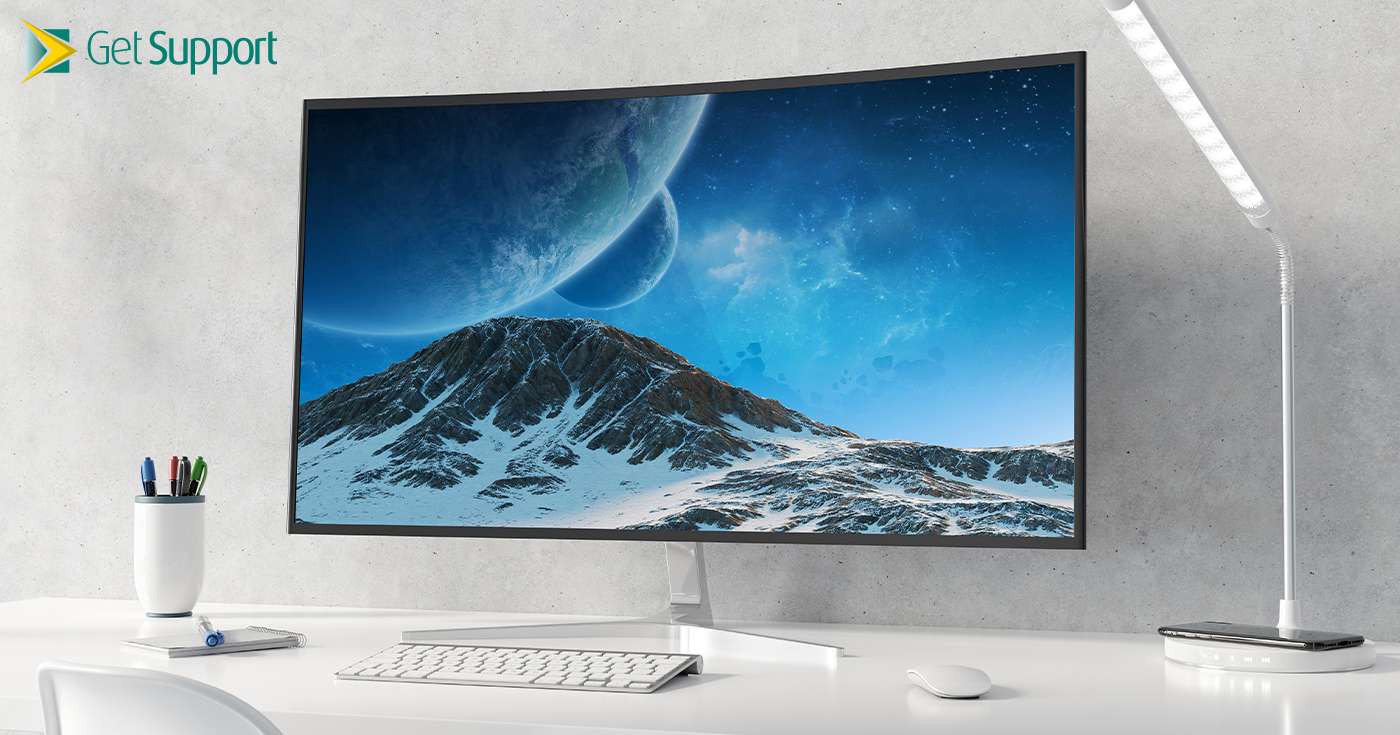
Executive Summary
- Curved monitors have always had something of a mixed reputation, with some people swearing by them and others believing they’re just a gimmick.
- With sales of curved monitors increasing across the globe, it’s clear there’s a big market for this type of tech, but why are people investing in such numbers?
- In this guide, we address whether or not curved monitors are really a gimmick or if they have a genuine use, especially for business users looking to boost their productivity.
Introduction
Should you buy a curved monitor or give them the swerve?
This is the question we’re here to answer – and for good reason. The use of curved monitors is actually on the rise, with statistics showing that global shipments of this type of monitor rose to 15.6 million in 2021 – up from just 10.4 million in 2019.
With so many people seemingly investing in a curved monitor, are they really just a gimmick as some people claim? Or is there a genuine usability-based reason to purchase a curved monitor for business use?
Let’s answer all of these questions (and a few more) in this tech deep-dive.
The basics of curved monitors
If you’re new to the concept of curved monitors, your most likely first question is simply… what is a curved monitor?
For decades – from the earliest cinemas to the very first televisions – screens have been traditionally flat, so why would we want a monitor which curves?
The idea of the curved screen actually dates back to 1952 in New York City, when the “Cinerama” cinema screen opened to the public. The idea was twofold: to provide a more immersive cinematic experience and to prevent reflections on the screen from washing out the far extents of either side.
It’s this same logic which has led to the modern curved monitors of today, which are designed with a concave form factor with the user seated at the centre to create a “wraparound” effect.
The benefits of curved monitors
The next question that’s likely to be pinging around your head is the big one: why?
Why would you choose a curved monitor as opposed to a conventional flat design? What benefits does the curve of the screen provide, and are they worth the adaptation you’ll need to do when you first make the switch?
We’ll talk about whether curved monitors are worth it in a few moments, but first let’s look at the rationale for investing in one. A word of caution: some of these are common sense, others are touted by manufacturers of curved monitors (which is something else we’ll get onto in a few moments).
- Wider field of view. Depending on the content you’re viewing, a curved monitor should offer you a wider field of vision, meaning your eyes won’t need to move around as much – hopefully reducing eyestrain. This is because your peripheral vision will actually come into play with a curved monitor, reducing your reliance on darting your eyes back and forth across a flat screen.
- Improved image quality. When used by a single person, the curvature of the screen should mean reduced colour falloff towards the edges of the screen. For more than one person, the curve will actually be detrimental due to poorer viewing angles.
- A reduction of reflections. Because of the concave shape of the curved monitor, reflections from behind the user will be less noticeable than those of a conventional flat screen.
- More immersive user experience. The curvature of the screen on these monitors, plus the wider field of view, makes the experience more immersive for some people – similar in some ways to a VR headset or those simulators which were all the rage back in the 90s.
Are curved monitors just a gimmick?
Now we get down to one of the great debates of the last few years in the tech world: are curved monitors actually better than flat ones?
As we mentioned above, there are many people who believe that curved monitors are nothing more than a marketing gimmick, giving manufacturers another way to simply shift more units. If you look into the benefits we listed above, you’ll notice a running them: they’re all fairly subjective.
The truth is that there is no hard scientific evidence for curved monitors being superior to flat ones. In fact, in some ways, they could be a harder sell for some people: they’re more expensive, they can’t be shared as easily, and they’re not well-suited to certain productivity tasks (like coding and graphic design). On the other hand, for gamers and anyone looking for immersive experiences, a curved monitor – especially an ultrawide model – can deliver one of the best visual experiences available today.
The bottom line
So, there you have it: the pros and the cons of curved monitors laid bare. Whether you feel that a curved monitor is the best choice for you is, as we mentioned above, an entirely subjective decision. It’s not possible to state whether a curved monitor is better than a flat one because, well, it’s entirely up to your own judgement.
That being the case, what do we advise? Well, if you’ve never tried a curved monitor before, it’s definitely worth taking some time to try one out. Perhaps visit a local electronics store or ask a friend who owns one to sit and try a curved monitor for a few minutes? You’ll know pretty quick whether or not a curved monitor is right for you.
Whether you’re a curved or a flat monitor type of person, the Get Support team is here to help your business with expert IT hardware advice. To learn more about how we could help you, call us today on 01865 594 000 or fill in the form below and our team will get back to you.